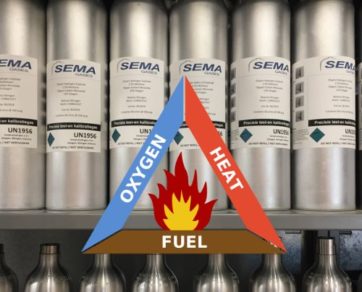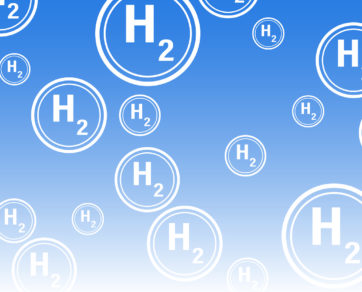The definition of flammable gas is: Flammable gases are explosive when they are mixed with air or oxygen in the right proportions. Examples of flammable gases are propane, hydrogen, butane, methane, ethylene, acetylene, ammonia, ethane and silane.
What is flammable gas? Flammable gases come in a wide variety, but they all got one common denominator; flammable gas will burn when it is in the presence/ mix of an oxidant and provided with a source of ignition. In this month’s SEMA Gases blog we will continue on the topic of flammable gases.
1) Definition of flammable gas
So we know the answer to the question of what is flammable gas now, but what is the correct interpretation? The definition of flammable gas is: Flammable gases are explosive when they are mixed with air or oxygen in the right proportions. Examples of flammable gases are propane, hydrogen, butane, methane, ethylene, acetylene, ammonia, ethane and silane. Flammable gas can also be known as combustible gas. Both namings mean the same.
2) Types of flammable gas
Hydrogen
Hydrogen is probably the most known flammable gas right now. With the global energy transition from fossil fuels to, among others, hydrogen, this gas is becoming more well known. Hydrogen is used as a fuel by powering the nuclear reactions that allow them to burn for billions of years. It is highly combustible when mixed with oxygen. For more information about hydrogen read our blog.
Butane
Butane gas C4H10 is a flammable LPG (Liquefied Petroleum Gas) that is mostly used for cooking, fuel in lighters and as calibration /test gas. Iso-butane is an isomer of the gas n-butane. Like butane, iso-butane is, amongst others, propane an LPG (Liquefied Petroleum Gas). Iso-butane has the same chemical formula (C4H10), but iso-butane has a different arrangement of atoms. For more information about Butane read our blog on 3-things to know about butane.
Methane
Methane is a chemical compound with the chemical formula CH4. It is a group-14 hydride and the simplest alkane and is the main constituent of natural gas. The relative abundance of methane on Earth makes it an attractive fuel. However, capturing and storing it poses challenges due to its gaseous state under normal conditions for temperature and pressure. The Earth’s atmospheric methane concentration has increased by about 150% since 1750.
As mentioned in the definition of flammable gases there are different sorts of flammable gases. Gases that will burn under the right circumstances are propane, hydrogen, butane, methane, ethylene, acetylene, ammonia, ethane and silane.
3) How to store flammable gas
Storing flammable gas needs more precautions than regular gas types. Because of the fact that propane, hydrogen, butane, methane, ethylene, acetylene, ammonia, ethane and silane gas are all flammable, and therefore dangerous gas, it is essential to store these gas safely and correctly. Store flammable gas in a cold, closable and dark area is critical. Keep the cylinders away from any form of heat, sparks, flames or hot surfaces at all costs. Keep the area where you store the flammable gas ventilated and cold, and away from any consumable beverages.



